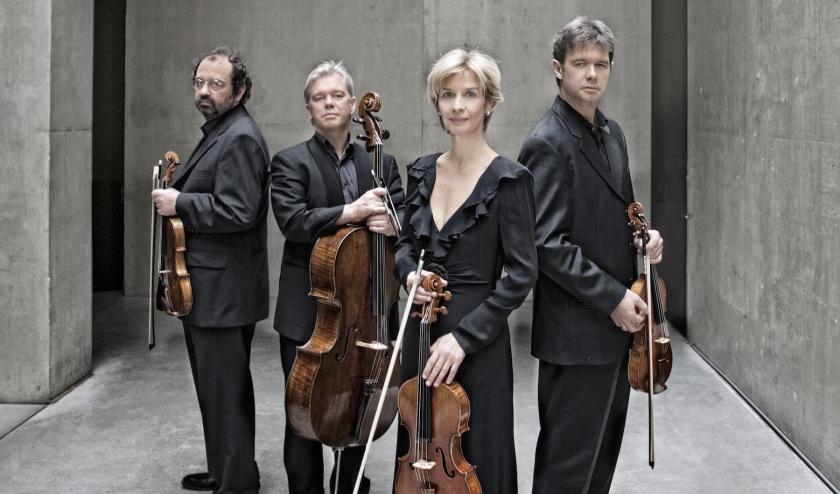The Hagen Quartet has been playing together for decades, and it shows. The group, which includes three siblings, performs with a deep and intuitive sense of unity: of timbre, technique, articulation and intent. Where most quartets are clearly led by the first violin, the Hagens move as one, the motivation coming simultaneously from each player. They put this finely honed ensemble to the service of emotive performances, but also retain a sense of intimacy and proportion. The result is an approach that is close to ideal for both Schubert and Beethoven, composers whose string quartet music is susceptible to overblown, Romantic interpretation, but which reveals inner depths when handled with greater care.
Schubert’s String Quartet in A flat, D 87, is an early work, written when the composer was 16 years old. But he was already maturing, from precocious prodigy to assured master, and the Hagens make no concessions. From the opening phrase, this was an interpretation of deeply felt intensity. The Quartet produces a distinctive tone, woody and light, but well-suited to the reverberant Wigmore acoustic, which adds warmth and projects detail. There is little bloom to the tone, and its dryness suits this early Schubert well, maintaining a sense of proportion for every gesture, even as the young composer’s ideas sometimes outgrow his structures. In fact, the Hagen’s uncompromising approach sometimes put the composer at a loss – where other ensembles might smooth the edges to play down ungainly tempo changes, the sheer artistic honesty and directness here ruled out any such compromise.
The music seems more thoughtful when presented with lighter textures
A similar honesty characterised the performance of Beethoven’s final string quartet, and indeed his final work, the F Major op 135, but the directness here was more about intimacy. The ensemble’s no-nonsense approach is apparent in their generally fast tempos and limited rubato, but these are also linked to modest dynamics and light articulation. So there is less drama in their late Beethoven, less angst. The music seems more thoughtful when presented with lighter textures, and the thoughts come through all the more clearly for the impeccable unity of ensemble. The slow opening of the final movement was particularly memorable, as bleak and disconsolate as anything in late Shostakovich. Again, this was a performance without elaboration, but also without compromise, and Beethoven’s final utterances were all the more powerful for it.
The broad strokes that opened Schubert’s Death and the Maiden Quartet showed that the Hagens are in fact capable of producing a rich, round tone, even if they use it sparingly. Although grander in conception than the earlier readings, this late Schubert was treated to an equally thoughtful interpretation. Significantly, the players resisted the temptation to let the music play itself. Schubert’s melodies have a tendency to run, one into the next, creating a single, undifferentiated statement across entire movements. But here, changes in texture and approach were often applied to articulate new phrases, preventing the listener from being lulled into unthinking acquiescence.
Some poor tuning in the upper register from the first violinist deserves mention, but not undue scrutiny, although it was also apparent in the second movement. Otherwise, the second movement variations were excellent, the Hagens yet again finding an ideal balance between the intimacy of the moment and the bigger picture. Weighty textures returned in the last two movements, the scherzo and finale, although both were balanced by nimble articulation and fleet tempos. The increased dynamics of the finale allowed the cello to come through as a more physical presence, emphasising the downbeats and making clear statements out of the answering phrases as melodies cascaded down from the violins. But picking out any of the players in this quartet for praise or criticism is a hopeless task – this is an ensemble that plays as one, and the directness and focus that result shine new light to every bar of these all-too familiar scores.














Add comment